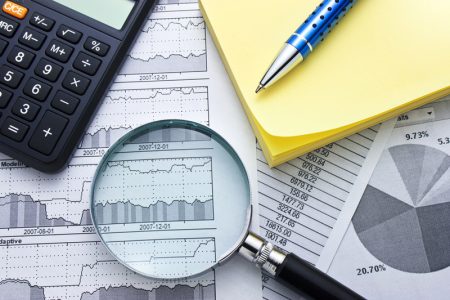By Mike Dolan
LONDON (Reuters) -Next week’s Federal Reserve meeting has lost the heat it once had as a likely moment for the central bank’s first interest rate cut – but it could shine a big light on where the Fed thinks the economy is at over the long run.
Conditioned by verbal pushback from Fed officials all year and still-sticky inflation and punchy growth readings, futures markets currently price a near zero chance of a first cut at the March 20 gathering and now favour June or July instead.
And yet the readout from the meeting will be packed with information about what happens next, not least an updated quarterly “dot plot” on policymaker projections and the likely start of discussions on slowing the Fed’s balance sheet runoff.
With many investors reassessing the long-term trajectory of the U.S. economy and whether it’s on a sustainably faster growth path, considerable focus will be on what those Fed dots say about the assumed “neutral” policy rate that neither stimulates nor reins in the economy long term.
Based on their median forecasts, Fed policymakers have left their long-run policy rate assumption basically unchanged since before the pandemic at 2.5%, barring a brief shaving to 2.4% in early 2022 that was quickly reversed.
And as Fed officials assume they will get inflation back to the 2% target one way or another over time, it implies they see a “real” neutral rate of just 0.5% – compared to the current real policy rate of about 2.5%.
A hike in that assumption may not make a difference to whether or even when the Fed starts to cut, as it could cut 200 basis points (bps) off rates over the coming two years and still claim to be in a “restrictive” mode bearing down on economic activity and inflation.
But it has potential significance of how much scope the Fed reckons it has over any easing cycle – where it sees a likely “terminal rate” in central bank parlance. And this is why it may be keenly watched by many investors.
The discussion is clearly well underway.
Unobservable in real time, the theoretical neutral rate is an ephemeral beast almost impossible to pinpoint until you’ve hit it and – even then – shifting sands of the economy may still shroud it in mystery.
Most Fed officials, including Chair Jerome Powell, claim not to know where it lies exactly.
And yet their best guesses on it should reveal some of what they think is happening under the bonnet of the economy, how restrictive they think the current 5.25-5.50% policy rate is right now and where rates may settle once they start an easing campaign.
FED MURMURS
Although not a voting member on the Fed’s Open Market Committee (FOMC) council this year, Minneapolis Federal Reserve President Neel Kashkari restarted the debate early last month.
“It is possible, at least during the post-pandemic recovery period, that the policy stance that represents neutral has increased,” he said.
San Francisco Fed boss Mary Daly, who is an FOMC voter this year, then said the neutral rate estimate was between 0.5% and 1.0% – implying a long-run policy rate of 2.5-3.0%.
Another 2024 voter, Richmond Fed chief Thomas Barkin, said it was certainly possible the neutral rate had risen. Cleveland Fed President Loretta Mester also said this month that it was an open question.
Speaking in London last week, the New York Fed’s John Williams seemed keener to dampen thoughts of a major change in thinking and said the neutral rate hadn’t risen much since the pandemic.
Such public uncertainty perhaps raises the bar for shift in the median “dot” on the long-run rate.
Yet any rise at all could affect markets’ thinking on anything from the dollar to Treasury debt – and on the stock market by extension.
Already, futures markets see Fed policy rates settling somewhere in the region of 3.0-3.5% over the next two years – almost 200 bps lower from here but still well above Fed’s standing 2.5% long run policy rate dot.
A rise in that “dot” of up to 50 bps back to 3% – where it was as recently as 2018 – could potentially pull markets’ assumed “terminal rate” of easing higher too.
What it does show is the Fed is at least mulling the implications of such impressive U.S. disinflation over the past year even as steep rate rises have left labour markets virtually unscathed and so far failed to seed any recession.
And to that effect, many economists are going back to the drawing board too.
One significant smoking gun this year has been revisions to U.S. immigration statistics for last year that change assumptions about the long-run trajectory of the labour force – possibly upping the level of job creation that can happen going forward without lifting wage growth and inflation further.
Other analysis homes in on how rising public debt levels may be playing a role in higher neutral rates.
A working paper published last week by the Bank for International Settlements tries to quantify the effect on the “natural rate” from big fiscal expansions.
The study, by economists Rodolfo Campos, Jesus Fernandez-Villaverde, Galo Nuno and Peter Paz, estimates the natural interest rate increases by 20-50 bps in response to a 10 percentage point increase in the ratio of public debt to GDP.
Given that U.S. debt/GDP has risen by about 20 points since before the pandemic to near 100% now – and is projected by the Congressional Budget Office to rise further to 116% over the next decade – those assumptions are certainly food for Fed thought.
The opinions expressed here are those of the author, a columnist for Reuters.
Read the full article here




